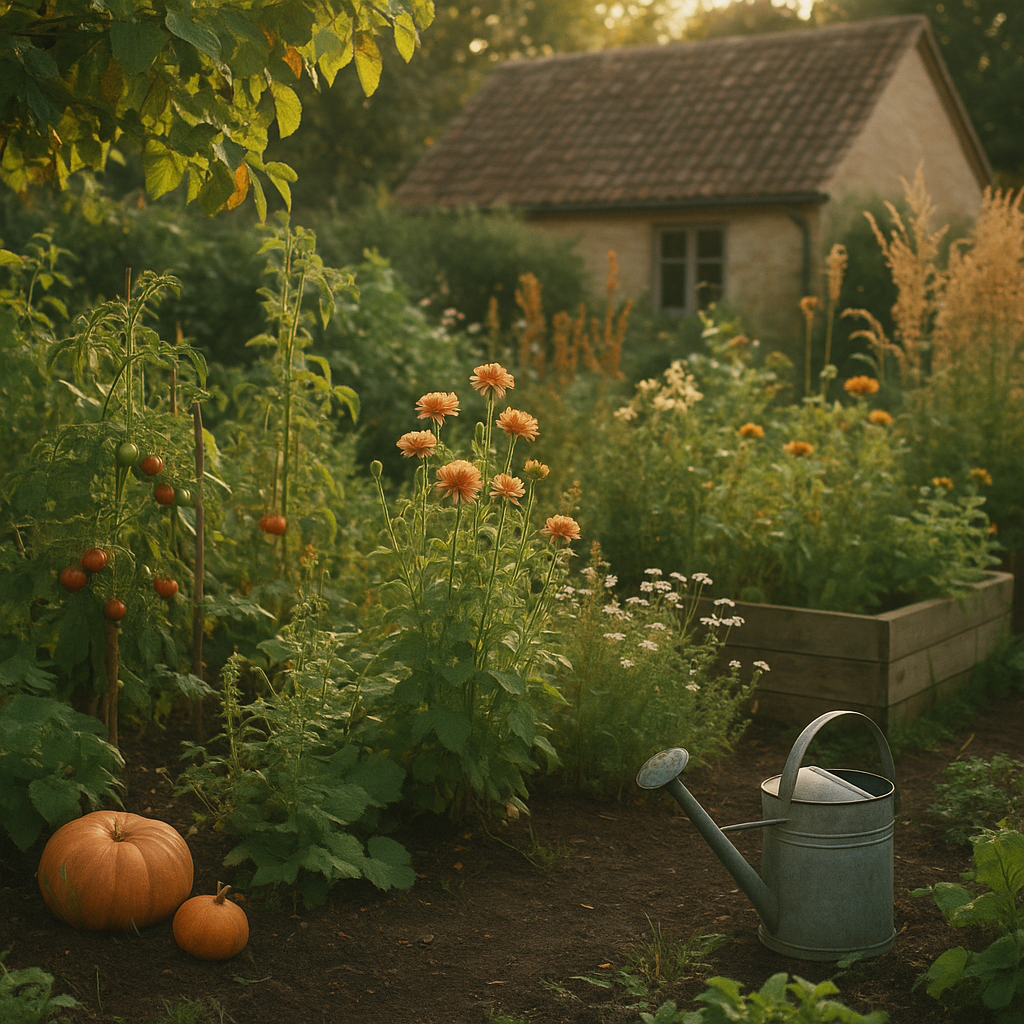7 Essential Seasonal Gardening Tips for Growing in Tune with Nature’s Rhythms
Seasonal gardening is more than planting seeds, it’s a way of living in rhythm with nature. Each season invites us to slow down, listen, and nurture both the soil and the soul. Seeds don’t hurry to sprout, blossoms don’t force their bloom, and the earth only gives what it’s ready to share. When we learn to garden in tune with the seasons, something within us begins to soften too.
At Everwood Cottage, we believe seasonal gardening isn’t about perfection or productivity. It’s about connection, tending your space with care, noticing the quiet miracles unfolding each day, and finding joy in the slow work of growth.
1. Begin Where You Are
Every gardener starts somewhere. It doesn’t matter if you’ve never planted a seed before or if your last attempt ended with wilted leaves and disappointment; growth begins again each season. Start with what you have and what you love.
- A sunny windowsill is enough for herbs.
- A balcony can hold tomatoes and trailing flowers.
- A small patch of soil can become a sanctuary.
The best garden isn’t the biggest, it’s the one you tend with care.
2. Seasonal Gardening Through the Year: Learning the Language of the Seasons
One of the joys of seasonal gardening is noticing how each plant responds differently to light, warmth, and rain. Every season has something to teach in the garden:
Spring — The season of beginnings. Sow seeds, prune, and feed the soil. It’s a time for courage and patience, trusting what’s unseen.
Summer — The season of abundance. Water deeply, harvest often, and enjoy the fruits of your labor. It’s a reminder to savor and share.
Autumn — The season of letting go. Gather seeds for next year, compost spent plants, and prepare your soil for rest.
Winter — The season of stillness. Reflect, dream, and plan for the next cycle. Nature rests, and so should we.
When you honor these cycles, gardening becomes less of a task and more of a conversation with the earth.
3. Grow What You’ll Use and Love
There’s a special kind of joy in stepping outside to pick herbs for dinner or clipping lavender to dry for sachets. Before planting, think about what truly fits your life:
- Do you love tea? Grow mint, chamomile, or lemon balm.
- Do you cook often? Try rosemary, thyme, and basil.
- Do you make natural remedies? Calendula and echinacea are gentle healers.
- Do you crave beauty? Nasturtiums, sweet peas, and zinnias will make your heart sing.
Gardening should bring ease, not obligation.
4. Foraging with Gratitude
Beyond the garden gate, the wild world offers its own gifts. Foraging connects us to the land in an ancient, reverent way. Before you gather anything:
- Learn your plants well – Always use a trusted field guide or local expert.
- Harvest responsibly – Take only what you’ll use and never more than a third of what’s available.
- Offer thanks – Whisper a word of gratitude or leave a small token.
In spring, look for dandelion greens and violets. In summer, elderflowers and wild mint. In autumn, rosehips and acorns. In winter, pine needles for tea. Each season holds a gentle treasure, if we move slowly enough to see it.
5. Compost: The Garden’s Quiet Alchemy
There’s poetry in composting; what once was discarded becomes nourishment again. Start small: a kitchen pail for scraps, a backyard bin, or even a vermicompost setup for small spaces. Mix browns (dry leaves, paper) with greens (fruit peels, coffee grounds) and let nature do her work. Composting reminds us that nothing in the garden is wasted, not even our mistakes.
If you’re new to composting, the USDA’s composting guide is a great place to learn how to turn everyday scraps into garden gold.
6. Create Garden Rituals
Rituals help turn ordinary tending into something sacred. Try lighting a candle before heading out to weed, or saying a short blessing before harvesting. Keep a journal to note what blooms when, or the first frost of the year. These small acts ground you in the moment and deepen your relationship with the earth.
7. Celebrate the Slow Magic
Gardening isn’t about instant gratification. It’s about noticing the first unfurling leaf, the hum of bees, the scent of soil after rain. The more we slow down, the more beauty we find. At Everwood Cottage, we call this the slow magic, the peace that comes from tending the little patch of world right where you are. The garden is always speaking. It whispers in rustling leaves and sighs in the breeze. It tells us to plant hope, nurture patience, and let go when the season turns.
The beauty of seasonal gardening is that it teaches patience, some seasons call for rest just as much as growth. So wherever you are, begin. Plant one seed. Step outside and breathe. You don’t need a perfect plan, just a willing heart and a bit of sunlight. Here’s to dirt under your nails, herbs on your table, and a season of gentle growth ahead.
If you love tending your home with the same rhythm, you might enjoy our Seasonal Homemaking Library.

